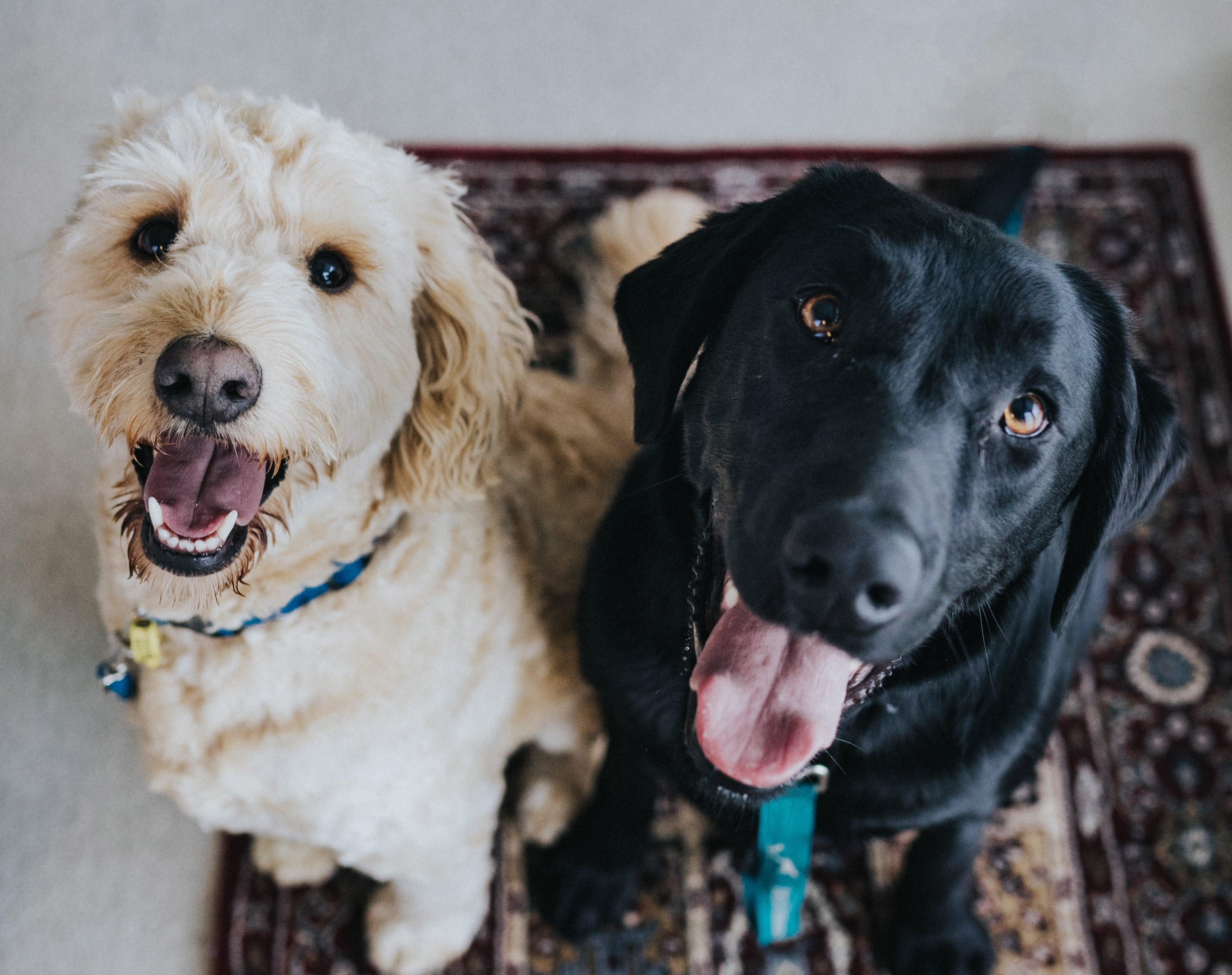 Photo by Jay Wennington on Unsplash
Photo by Jay Wennington on UnsplashHello beautiful people! In my last post I talked about aromatherapy and recently discovering a brand called Young Living. Since I am just starting out in aromatherapy, I am not quite ready to take the plunge and make a large investment into the Young Living brand of oils.
However, I am still very intrigued to see how effective aromatherapy really is. And if it proves to be something worth wild then I will look further into Young Living oils. But until then, I have started doing a little research and will experiment with another brand.
Anytime I start something new, I always consider my health, and the health of my kids, husband, and my very beloved doggies! I certainly would never want to do anything to jeopardize their health and well-being.
So, as I started to look for essential oil brands outside of Young Living, I noticed that one brand, Plant Therapy, had certain oils marked as “Kids Safe”. And this got me asking several questions.
1. Why do something like essential oils need to be designated as “Kids Safe”? I mean if they are derived from plants, and considered to be more holistic, then why wouldn’t all of the options be considered “Kid Safe”?
2. What about pets?! How will they be affected by essential oils and aromatherapy?
It is the second question that I want to explore initially because I can see that there is clearly a kids friendly route to take for the first question (though I will need to look into this further and understand why there is the need for a separate kid friendly option).
Naturally I don’t want to harm my kids, but I want to make sure I don’t harm my pets as well! After all, they were my first “babies”…….though my husband would disagree. 😉 But I have always been a dog person and am a very large advocate for “pet therapy”……but more on that at another time.
Being a HUGE dog and animal lover in general, I would never want to do anything that would bring them harm. So I started looking into essential oils and pets a little more closely and I am glad that I did because what I found is that not all essential oils are safe to use around our furry friends!
In fact there are some that are downright toxic to animals, and some even more so to cats.
But before we jump into talking about which essential oils are toxic to dogs, be sure to pick up my FREE Top Toxins to Eliminate From Your Personal Care Products Guide {a $97 value}…….because just as we don’t want to harm our furry friends, we also want to be sure we aren’t accidentally harming ourselves and our loved ones by using products which could be negatively affecting our health! Download the guide NOW by clicking the button below.
So why are essential oils toxic if they are supposedly a better alternative to fragrance? Well essential oils are “basically the volatile, organic component of plants that give each plant its distinctive fragrance and taste.” Oils are found in the roots, stem, leaves, nuts, and seed (essentially all parts) of a plant.
The reason they are considered volatile is because their molecules quickly transition from a liquid or solid state into a gas state, which is what makes it possible to use these in aromatherapy.
As a side note, I never really thought about the fact that when you smell an oil, you can take in the fragrance because it is giving off a gas……it makes sense, but still, it’s not something you normally think about. Basically what happens when you open a bottle of essential oil is that the molecules escape the bottle by shifting from a liquid to a gas allowing you to smell their aroma.
Ok, so moving on to what is toxic and why. In doing my research, I checked a couple of websites…..came across a blog or two, but more importantly found a reliable resource, the Pet Poison Helpline website and an article on Rover.com which was written by a certified Vet Tech. So rest assured, this information is as accurate as possible given that I am not a vet.
That being said, if you are interested in using essential oils around your pet, be sure to consult your vet first!
Since the Pet Poison Helpline is the expert here, I am going to summarize and/or quote their info below because I don’t want to risk mistyping or misinterpreting something which could change the meaning.
Here are the most commonly seen essential oil toxicities in dogs!
Young Living / Aromatherapy essential oil # 1 – Tea Tree Oil (aka Melaleuca)
This is the most commonly seen essential oil offender in toxicities to dogs according to the Pet Poison Helpline website and here’s why:
“Tea tree oil originates from the leaves of the Australian tea tree. These exposures often occur with application or administration of the concentrated tea tree-oil by well-meaning pet owners attempting to treat their pet for various skin conditions or external parasites such as fleas.
It is equally absorbed with both dermal or oral administration and both result in toxicity. These toxicities are not caused by the very low concentrations of tea tree oil in the various shampoos made for dogs. The concentrated products are the primary culprit.
We can see signs of depression, ataxia (very uncoordinated gait), paralysis of the rear legs, vomiting, hypothermia (low body temperature), and dermal irritation. These exposures will require veterinary intervention. The signs can be present for up to 4 days with aggressive care and treatment.”
Young Living / Aromatherapy essential oil # 2 – Pennyroyal
“Pennyroyal is an oil from Mentha Pulegium, more commonly known as European Pennyroyal or squaw mint. Pennyroyal has a long history in folk medicine with use as an insect repellent. It can be used by unsuspecting pet owners to treat flea infestations or to try to prevent flea infestations.
Again, oral or dermal exposures can both result in toxicity. The short answer on the toxicity with pennyroyal is that it causes hepatic necrosis or liver failure.
Dogs can become sick after exposure with vomiting, diarrhea, both of which can be bloody, lethargy and death due to hepatic necrosis. Again, aggressive veterinary care is needed to try to support the liver and prevent liver failure.
Pennyroyal is a known toxin to dogs and all forms of it should be avoided in dogs.”
Young Living / Aromatherapy essential oil # 3 – Oil of Wintergreen
“Oil of Wintergreen is derived from the Gaultheria Procumbens or the Eastern Teaberry. Long story short, Oil of Wintergreen contains methyl salicylates, more commonly know as aspirin.
It is many times used topically as a pain reliever for muscle aches and pains but may also be used in holiday candies with bakers having bottle of concentrated product.
Dogs can show signs of aspirin toxicity and we can see signs of vomiting due to severe gastrointestinal upset and ulcers, along with potential renal and liver failure. Aggressive veterinary care is needed for gastrointestinal protection and renal and hepatic support.”
Young Living / Aromatherapy essential oil # 4 – Pine Oils
“Pine oils are derived from Pinus sylvestris or the Scots Pine located in Europe. In fact, it is the national tree of Scotland.
Pine oils are used as a natural disinfectant, deodorizer, household cleaning products and massage oils. The touted benefits of pine oil include increasing circulation, aids in decreasing swelling, tenderness and pain in sore joints and muscles along with antibacterial properties.
What can be seen in dogs with dermal or oral exposure can be dermal or gastrointestinal irritation, vomiting that may be bloody, drooling, weakness, ataxia, along with affects to the central nervous system, and potential renal and liver affects.
Again, aggressive care is needed to limit or decrease the exposure and prevent worsening clinical signs.”
Another element of concern with essential oils is with the risk of aspiration and aspiration pneumonia. Because of the viscosity of oils, vets become concerned with the dog getting the oil in their lungs not only when ingesting it, but also because of the irritation that it can cause to the gastrointestinal tract.
Vets can see the oil be aspirated when it is vomited back up. For this reason, the Pet Poison Helpline does not recommend induction of emesis with oil products and does recommend immediate veterinary care with most of these exposures.
I hope that you have found value in learning a little about what to avoid when using essential oils and aromatherapy, whether it is Young Living essential or oils or another brand, and will feel more confident in taking steps towards achieving true wellness!
If you have found value, please share by clicking on the icons below this article so that I can help your friends and loved ones as well!
And don’t forget to download my FREE Top Toxins to Eliminate From Your Personal Care Products Guide {a $97 value} by clicking the button below!
Until next time……..
Here’s to achieving true wellness!

P.S – What do you want to know about? Drop me a comment below and let me know what you’d like to learn more about to help you achieve true wellness!
*Legal Disclaimer – All information provided above is for educational purposes only. Information should not be construed as medical or legal advice in any capacity and is not intended to diagnose, treat, cure, or prevent disease.